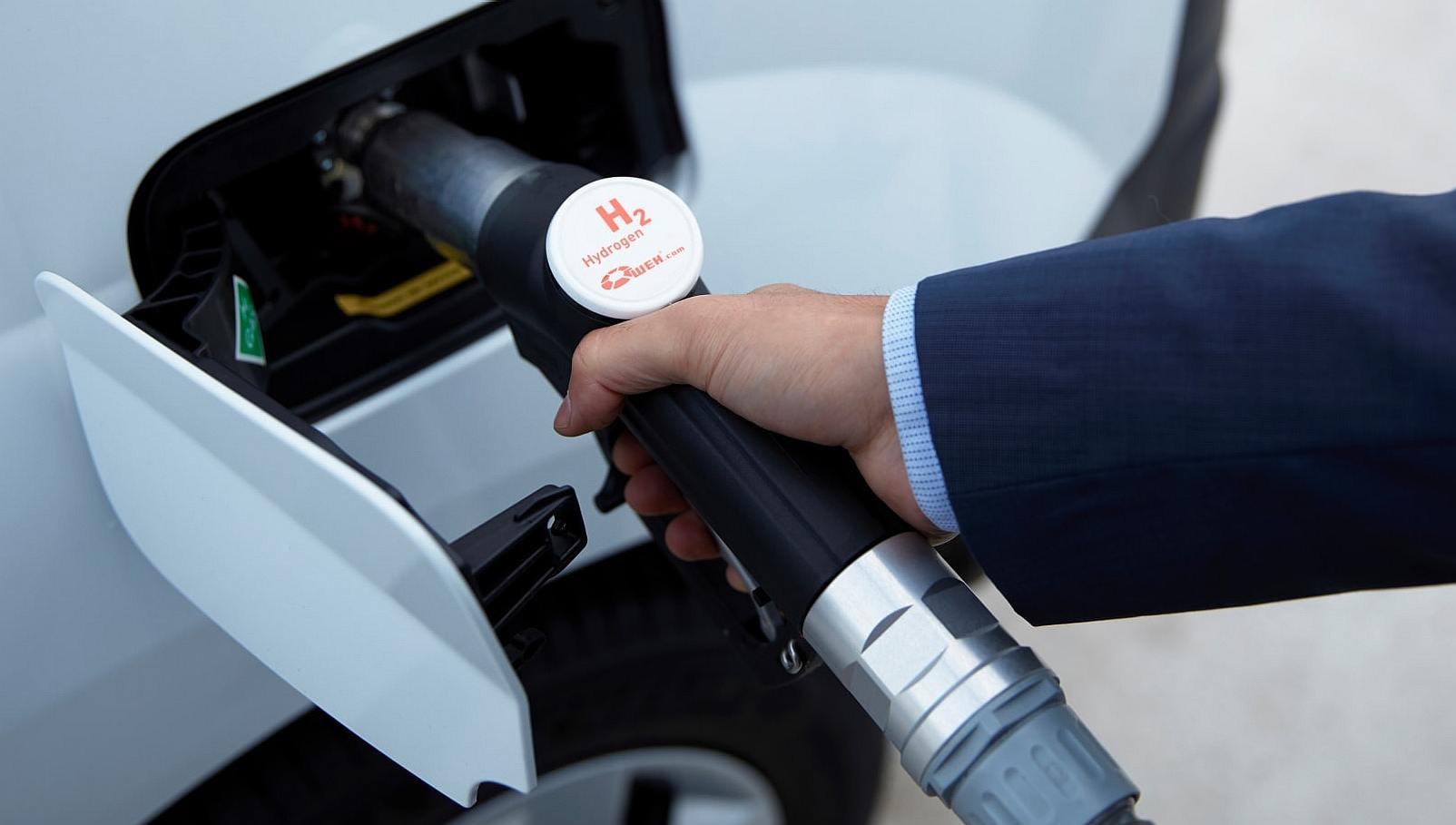|

How
do we get service stations built that provide hydrogen to the masses? It's a
good question, something we have been working on for some time, but without
the investment to develop such ideas, with political backing, and if
necessary, statute to accelerate the pace of development, we may never reach
the circular economy that the United Nations' are striving for.
TELEGRAPH
JULY 2018
Ki-Sang Lee’s purses his lips before answering my question about the merits of fuel cell versus battery electric vehicle powertrains. Hyundai’s vice president of research and development has a unique perspective on the issue, his company having just launched an FCEV and an EV which look, from a distance, like the same car.
So which will come out on top, fuel cell or battery electric? The answer is not so simple. Lee agrees that battery technology has improved hand over fist in recent years and costs have reduced commensurately; he agrees with
General Motor’s claim that uninstalled lithium-ion cells now cost about $140 per kWh.
“But for the future, I have some doubts,” he says. “Lithium-ion has improved a lot but by 2025, it will start to represent a lag in improvement, so we will need
alternative battery technology.”
He also cites the price and growing scarcity of rare metals and elements used in lithium-ion batteries, such as cobalt or manganese, as potential brakes on the widespread introduction of battery-electric cars. Cobalt, for example, is a rare metal derived as a byproduct of mining copper and nickel. In the last couple of years it has tripled in price from about $24,000 to over $80,000 a ton and with 60 per cent of supplies coming from war-ravaged Democratic Republic of Congo, motor makers have joined Silicon Valley giants to scour the world in search of plentiful, reliable supplies from more ethical sources.
“Prices have gone up compared to two years ago,” says Lee, who says that rare materials now represent 60 per cent of the cost of the battery. “The worry is that if we are asked to increase production by, say 20 times, there would be a lot of pressure on supply and cost.”
Lee says that his engineers are already looking at solid-state cells,
rare-earth-metal/air and lithium/sulphur as alternatives, and is working with Silicon Valley firms and academics on the next generation of
batteries.
He also dispels the myth of the transferable battery technology, as the technology is developing so fast. It means that the vision of
future-proofed battery electric cars we were once promised is largely illusory. Asked if the Kona EV’s battery could be fitted to the existing Ionic, Lee says: “no, because it is different battery technology, two years along from the Ionic launch the energy density and the battery power has changed; we would have to change the whole car.”
[not so with versatile cartridges]
He agrees, however that the lower-powered motor from the lower powered Kona could be used with the higher powered battery, but he’s not about to do that because:
“Tesla has shown the
electric vehicle as a performance car and we wanted to do the same to show off our technology; it’s more dynamic and more fun.”
As for fuel cells Lee says Hyundai will continue to work on them as they have a big role in commercial vehicles and those in payload- and range-critical applications. By 2025 he hopes to have fuel-cell costs comparable with that of
diesel engines. For fuel cells the big issue is cost;
fuel cells aren’t cheap, and the spun-carbon and
aluminium high-pressure
hydrogen tanks and pressure valves are also really expensive.
That’s the problem with fuel
cells. You’re fighting cost and development on so many fronts, and it’s why car makers who started by collaborating on the technology and dissolved those partnerships when they thought they were giving away commercial advantage, are now re-establishing cooperative deals
(Toyota and
BMW, Honda and General Motors, Hyundai and
Audi, for example) as they realise they need to pool resources and spread the costs.
Lee’s doubts about the continued supply and low price of some of the battery components is profound, however, and he also has another objection to the wholesale adoption of battery only vehicles.
“Thinking about the whole world,” he says, “there is a problem in what we do with the old batteries. At the moment, even after a second life [as
electricity
storage
buffers], we are burying them in the ground as lithium has a problem with explosions.
“Maybe other companies might find a solution to this, or find a way of recycling the cobalt, but at the moment, the fuel cell is recyclable and we have had plenty of experience in doing it as the platinum is the same as that used in exhaust catalysts.”
So in the long term, fuel cells might be the more cost effective and environmental solution. But what about today?
By Andrew English
LINKS
& REFERENCE https://www.telegraph.co.uk/cars/comment/hydrogen-fuel-cells-long-term-solution-today/ https://www.branduk.net/hydrogen-fuel-cells-are-the-long-term-solution-but-what-about-today/
This
website is provided on a free basis as a public information service.
copyright © Climate Change Trust 2021. Solar
Studios, BN271RF, United Kingdom.
|
